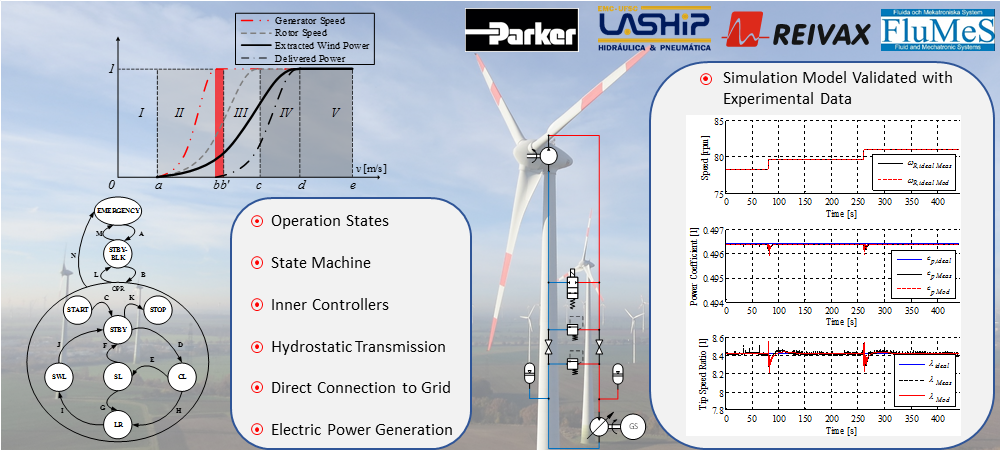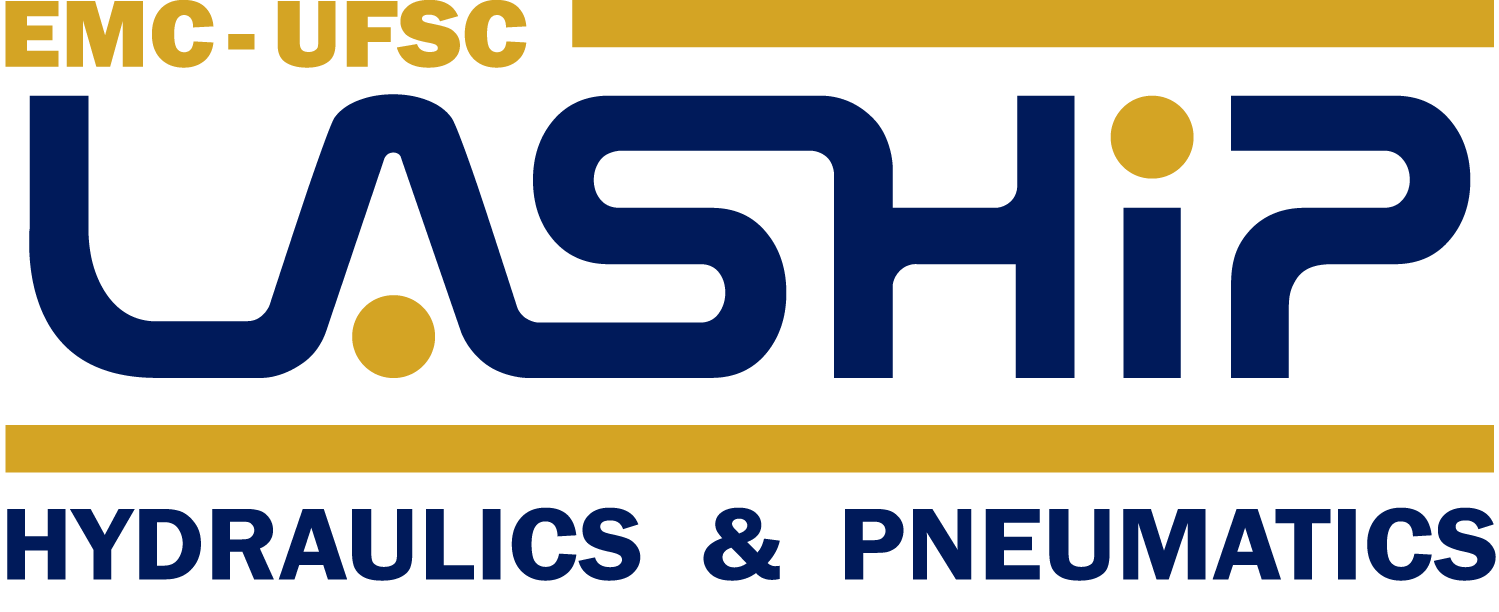Program: UFSC / POSMEC
Date: May 2018
Advisor: Victor Juliano De Negri
Abstract:: In the pursuit to increase the share of wind power in the global power matrix, the reduction of system, operability and maintenance costs are key factors to be improved through research and development. There is a trend to research and develop hydrostatic transmissions aiming to use them in wind turbines. This trend is settle by research institutions and wind power companies around the world. Despite of fluid power transmissions with a pump and motor be a well developed technology, the application of them into wind turbines has a series of challenges. A few of them are the system controllability, energetic efficiency and prove of concept feasibility. This thesis is about a prove of concept of a hydrostatic transmission for wind turbines. This concept has the pump at the top of the nacelle and the hydraulic motor driving a synchronous generator at the ground level. The hydrostatic transmission concept is theoretically studied having its behaviour and parameters described in terms of wind and turbine properties. An analysis of the transmission and synchronous generator open-loop stability is per-formed. A test bench, using off-the-shelve components, capable of generating electricity and to deliver it to the grid, is build to evaluate experimentally the proposed concept. A state machine structure for system control in all the different turbine operation regions is developed and implemented at the test bench. Inside each turbine operation state there is a controller acting on the system to achieve the operating region task. It is proposed a new structure to one of these controllers to increase the system performance. A mathematical model of the whole system, that was previously developed by other authors, is improved by introducing the new control structure, components parameters and also by validating it with the measurements made at the test bench. The performance of the system is assessed and demonstrated using two different wind profiles. As outcomes of this thesis there is the prove of the system concept, where it is shown its feasibility. Another output is a validated mathematical model that allows for further and deeper analysis of the system behaviour. A state machine structure that can be used in a real turbine with this transmission concept, is also delivered. In terms of control quality, the proposed control solution showed to be suitable and effective on the tested conditions. However, it is necessary to continue with the system stability analysis. One of the conclusions is that the system efficiency is still the major disadvantage. However, it is shown that it can be improved.
Reference: RADUENZ, H. Experimental dn Theoretical Analysis of a Hydrostatic Transmission for Wind Turbines. 2018. 206 p. Dissertação (Mestrado em Engenharia Mecânica). Universidade Federal de Santa Catarina, Florianópolis.




